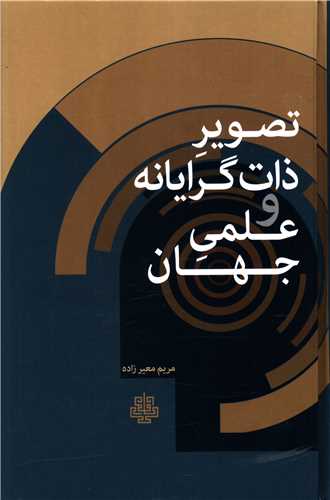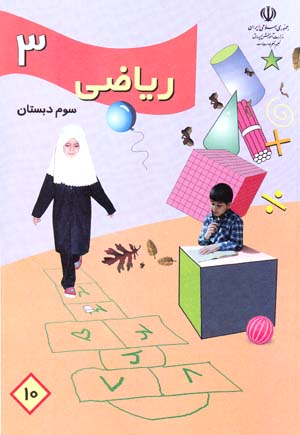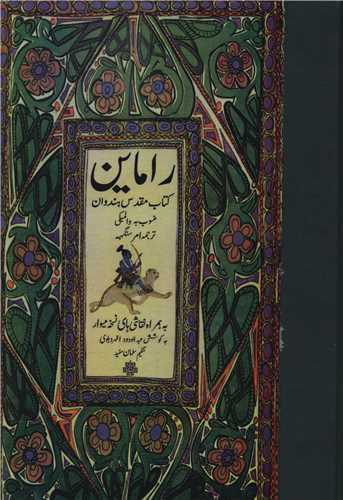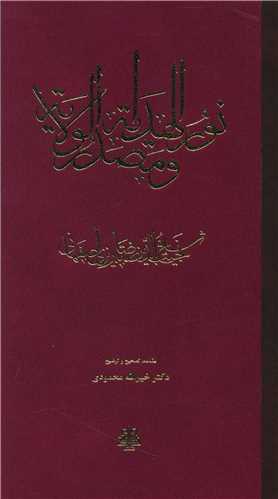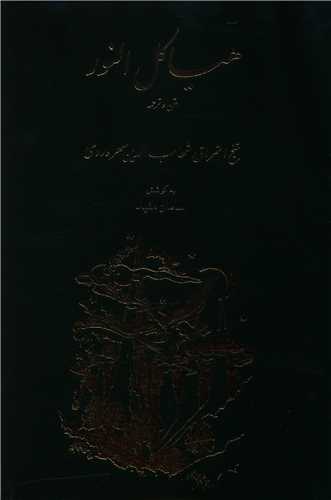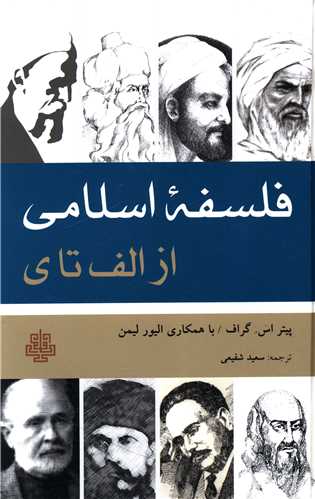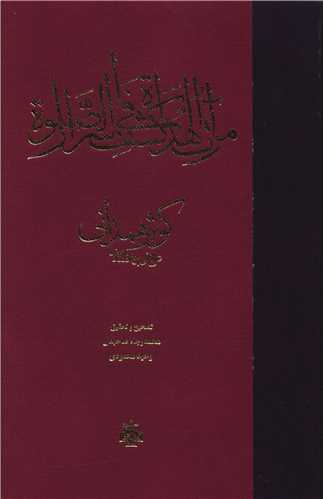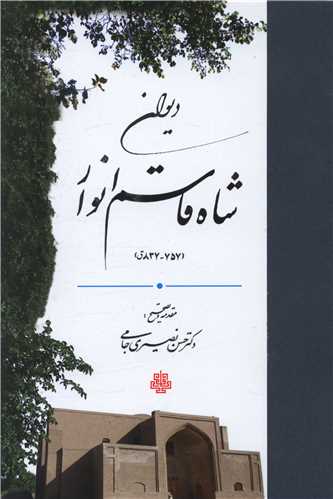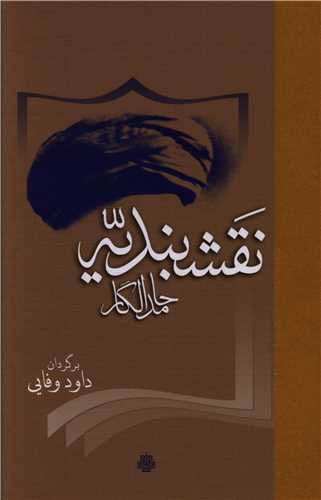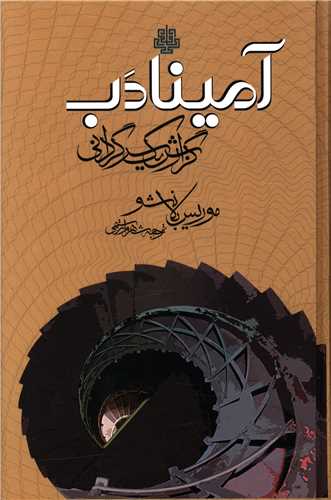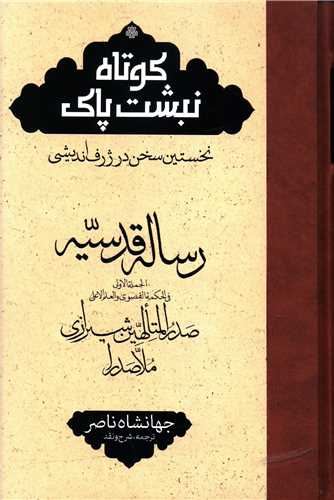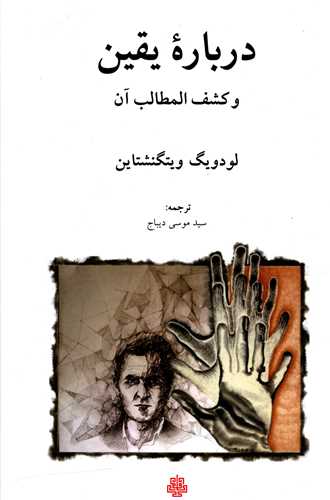Taṣvīr-i Zāt'girāyānah va 'Ilmī-yi Jahān: Persian 1399
تصویر ذات گرایانه و علمی جهان
16.34 $
Share
Wishlist
The discussion of essence has had a fundamental importance in Aristotle's metaphysics, and then in the Mashai tradition, Western philosophy, and Islamic philosophy. By denying the possibility of knowing the essence of things in the Kantian and Neo-Kantian traditions, and especially by denying metaphysics in logical positivism, it became impossible to talk about the essence of things. But with the re-design of metaphysics in the philosophy of science and the attempt to explain the metaphysical physical, chemical, and biological behavior of objects and natural laws, essentialism entered a new stage with a scientific attitude. This attitude was enriched with the discussion of "generals" and "natural type" in the framework of the "metaphysics of science".
This book is a process from traditional essentialism to scientific essentialism, which deals with the essence of the elements that make up this world. Historically, the root of essentialism goes back to the Aristotelian tradition - traditional essentialism - so the content creation process started with the topic of Aristotle's essentialism. In Aristotle's essentialism, the properties are the essence of the object, and the essence of the object expresses the definition of the object. This interpretation of essentialism has conflicted with the critiques of Locke and empiricists on metaphysics and, as a result, essence so the discussion about essentialism was not opened until the end of the 17th century. From the 17th century onwards, with the introduction of the opinions of Descartes, Newton, Locke, and Leibniz and on the other hand, the decline of logical positivism in the second half of the 20th century, the metaphysical approach and its related topics were raised again.
This space provided the assumption of essence and a possibility to explain the behavior of the inherent elements that make up this world based on it. Therefore, the current of modern essentialism was revived by metaphysicians. In this flow, the constituent elements of this world are introduced with definitions and characteristics under natural types. Natural types and their inherent characteristics have a special place in scientific essentialism. In this book, the development of this position and the scientific image of the world is done from the perspective of Brian Ellis one of the prominent contemporary metaphysicians in the field of scientific essentialism...
more
بحث از ذات در متافیزیک ارسطو، و سپس در سنت مشائی، فلسفه غرب و فلسفه اسلامی اهمیتی بنیادین داشته است. با نفی امکان شناخت ذات اشیا در سنت کانتی و نوکانتی، و به ویژه با انکار متافیزیک در پوزیتیویسم منطقی سخن گفتن از ذات اشیا ناممکن شد. اما با طرح دوباره متافیزیک در فلسفه علم و تلاش برای تبیین متافیزیکی رفتار فیزیکی و شیمیایی و زیستی اشیا و قوانین طبیعی، ذاتگرایی با نگرش علمی وارد مرحله تازهای شد. این نگرش با بحث از «کلی»ها و «نوع طبیعی» در چارچوب «متافیزیک علم» غنای درخور توجهی یافت.
کتاب حاضر فرآیندی از ذاتگرایی سنتی تا ذاتگرایی علمی است که به چیستی ذات عناصر تشکیلدهنده این جهان میپردازد. به لحاظ تاریخی ریشه ذاتگرایی به سنت ارسطویی –ذاتگرایی سنتی- بازمیگردد، بنابراین فرآیند تولید محتوا با طرح موضوع ذاتگرایی ارسطو آغاز شده است. در ذاتگرایی ارسطو، ویژگیها، ذات شی هستند و ذات شی بیانکنندۀ تعریف شی است. این تقریر از ذاتگرایی با نقدهای لاک و تجربهگرایان بر متافیزیک و به تبع آن ذات مواج بوده است به طوری که باب گفتوگو درباره ذاتگرایی تا اواخر قرن 17 گشوده نشد. از قرن 17 به بعد، با مطرح شدن نظرات دکارت، نیوتن، لاک و لایبنیتس و از طرفی افول پوزیتیویسم منطقی در نیمه دوم قرن بیستم، مجددا رویکرد متافیزیکی و مباحث مربوط به آن مطرح شد.
این فضا فرض ذات و امکانی برای تبیین رفتار عناصر ذاتی تشکیلدهندۀ این جهان بر پایۀ آن را مهیا ساخت. بنابراین جریان ذاتگرایی نوین توسط متافیزیکدانان احیا شد. در این جریان عناصر تشکیلدهنده این جهان با تعاریف و مشخصههایی تحت انواع طبیعی معرفی میشوند. انواع طبیعی و ویژگیهای ذاتی آنها جایگاه خاصی در ذاتگرایی علمی دارند. در کتاب حاضر طرح و بسط این جایگاه و تصویر علمی جهان از منظر برایان الیس به عنوان یکی از متافیزیکدانان معاصر مطرح در عرصه ذاتگرایی علمی صورت میگیرد...
more

